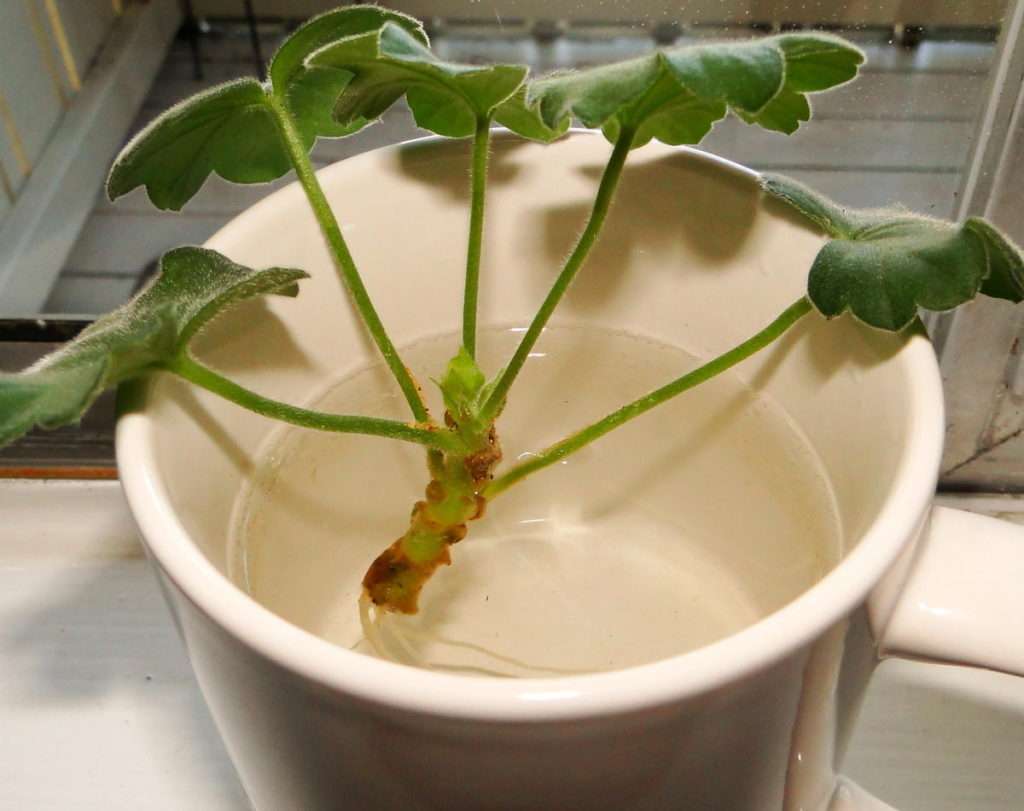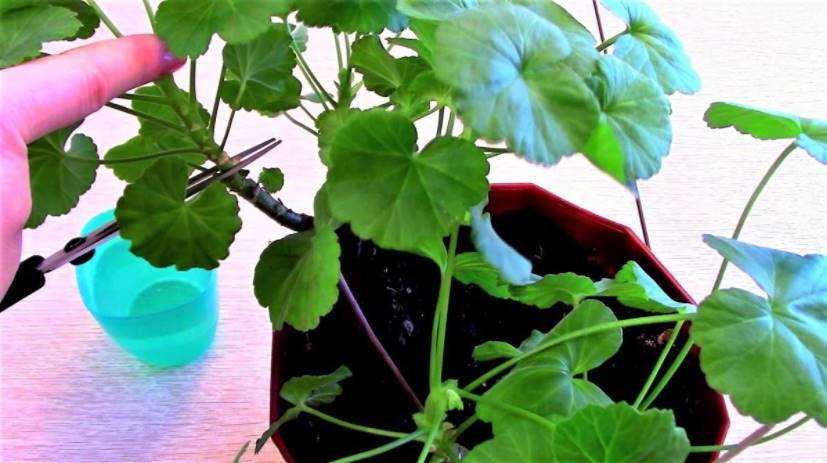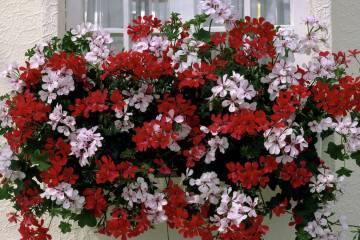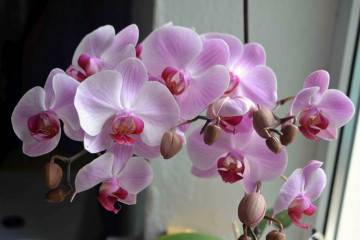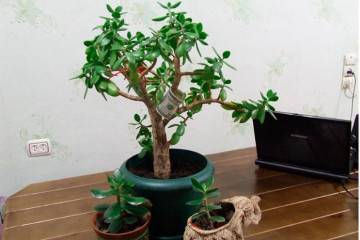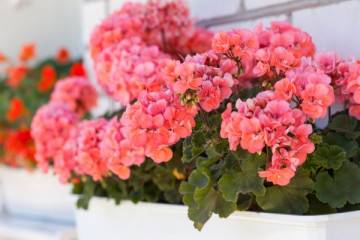How to plant geraniums - growing from cuttings at home
Content:
Geranium is a beautiful, unpretentious house plant. She takes root equally well on the windowsill in the apartment, on the flower bed on the street. Lush variegated flowers of red, white, pink shades will decorate a house or landscape design. The flower develops and grows well, provided it is properly planted and cared for. Its health, abundance of flowering are laid even at the planting stage. Gardeners should make an effort to make this culture comfortable. Therefore, it is so important for beginners to know how to plant geraniums and how many transplants there can be.
Geranium breeding methods
Reproduction plays an important role in the agricultural technology of this crop. This procedure will not only increase the total number of plants, but also allow you to rejuvenate old flowers. Young bushes take up less space, while they have a more attractive appearance, give abundant flowering.
There are two main ways of reproduction: vegetative and generative. Each of these methods has its own characteristics, advantages and disadvantages.
Vegetative (by shoots or cuttings)
With this method, geraniums are planted by cuttings in a pot or by dividing a bush. Cuttings are more popular due to their lightness. In adult plants, the stem is stretched out, bare, and the inflorescences bloom only on its upper part. The flower loses its attractiveness. To renew the bush, it is pruned regularly every year.
The cut shoots are rooted and cuttings are obtained. To get viable seedlings, you need to know how to plant geraniums in a pot without roots. In this way, you can get several dozen cuttings. These simple manipulations allow you to update the bush and propagate pelargonium.
Reproduction by shoots is possible only if new shoots have appeared at the rhizome. Then the bush is carefully removed from the ground and divided in such a way that the young plant has its own roots. Separating young shoots from the mother plant is necessary when they are small.
Generative (seeded)
Florists rarely use this propagation method, because the shoots obtained from the seeds are different from the parent bush. With the generative breeding method, new varieties are bred. For the efficiency of reproduction in this way, the following factors must be taken into account:
- sowing time;
- soil quality;
- picking;
- care rules.
How to plant geraniums with a shoot without roots in a pot
Geranium shoots are obtained in different ways. You can buy ready-made cuttings, take from friends, or cut them from a home plant. There are different ways to plant geraniums with a shoot without roots. The rooting time depends on the type of flower. Simple varieties take root within two weeks, while royal varieties take at least 1.5 months. It is useful for flower growers to know how to plant geraniums without roots and how to grow rhizomes.
Optimal time for cutting off the shoots
Novice florists are interested in the question of when it is possible to make cuttings. Seedlings of this flower are prepared at any time. But, as practice shows, shoots planted in spring take root and develop best. This is due to the fact that during this period the plants wake up after winter, active sap flow begins, and the shoots grow rapidly. Summer seedlings, planted from mid-July to early September, also develop well. Cuttings obtained at other times of the year do not grow well and may even rot.
Cutting preparation
Cuttings are cut with a very sharp knife, after having disinfected it. An incision is made 1 cm below the knot at a right angle to the trunk. The shoots are cut to 7 cm in length. They must have at least 2 leaves. The inflorescences and buds are cut so that all the forces of the new shoot are directed to the formation of roots.
The cut sprout is dried in a dark place at room temperature until a film forms at the cut site. This is necessary to protect the shoots from the possibility of infection.
Ways to get roots from a shoot
Apical cuttings take root best. But in order to get viable seedlings, you need to know how to transplant geraniums with cuttings without roots. They are recommended to be rooted in soil, not in water. The stems accumulate moisture and can rot over time. Roots appear faster in water. Therefore, flower growers prefer this particular method of breeding geraniums.
In order to prevent the death of the sprout, it is necessary to constantly monitor the process. Geranium is immersed in settled water at room temperature to a depth of no more than 2 cm. The container with the liquid should be dark opaque. Coal diluted in water will help reduce the risk of decay.
With the soil method of rooting, the shoot is dropped to a depth of 2 cm. Before planting, the cuttings are treated with powdered coal. For better growth, the tip is sprinkled with a special stimulant. Any primer can be used for home flowers, well-drained and loose.
Abundant watering is not required when growing the root system. It is enough to ensure that the earthy clod does not dry out. Protect young shoots from direct sunlight.
Rooting process
The finished seedlings are planted in a pot and looked after as a mother plant. Drainage is placed at the bottom of the container, a mixture of universal soil, vermiculite and sand. The day before planting, the ground is watered with a solution of hot potassium permanganate. The sprout itself is deepened into the soil strictly in the center of the pot.
Caring for a rooted shoot
After planting, the flower pots are placed in a dark place. After five days, they can be rearranged on the windowsill, protected from direct sunlight. If the leaves dry up, then cover the plantings with a film or a jar. The shelter is removed after the young bushes return to normal. Watering is carried out regularly with a small amount of water.
Cuttings will develop rapidly at room temperature in a well-lit area. If you follow these simple rules, young sprouts will delight you with abundant flowering in a few months.
Transfer to a permanent place
Successfully rooted cuttings can be transplanted to a permanent location. The maturity of the sprouts is evidenced by the appearance of young leaves. The transplant is carried out in flowerpots with light and loose soil, which are exposed to the windows from the west and east sides.In the summer, flowers are taken out into the street. In winter, the optimum temperature for keeping is no more than 15 ° C. Watering is reduced.
Other ways to plant geraniums
Novice growers need to know the features of all breeding methods. This will allow them to get beautiful geranium bushes.
Seeds
Only varieties with non-double, simple inflorescences can be propagated in this way. Growing hybrid and varietal geraniums vegetatively will not work. Geranium seeds are very small, so the soil for sowing them should be sifted, light, consist of sand, peat and sod land (1: 2: 2). The substrate is disinfected, moderately moistened. The surface of the soil is leveled and the seeds are spread at a distance of 5 cm from each other, sprinkled with earth.
Containers with crops are covered and placed in a dark, warm place. After the appearance of the first shoots of planting, you need to open and expose to the light. The air temperature should not exceed 22 ° С. At higher rates, the cotyledons are elongated.
By dividing the rhizome
Perennial adult geranium bushes become cramped in the pot. In this case, geranium propagation is used by dividing the rhizome. It is cut in such a way that there is a growth bud at each segment. Division can only be carried out on healthy shrubs, weakened and painful plants will die. The harvested roots are planted in pre-prepared pits. The best time for the procedure is spring or autumn, when the forces of the plant are not directed towards flowering. All tools and materials must be clean and disinfected.
Young geranium care
Geranium is considered an unpretentious plant. Duration, abundance of flowering ensured her great popularity. Many varieties have exquisite aromas. Even a novice florist can cope with care and grow a crop. The health and appearance of a plant depends on the efforts of the grower. With the right content, the culture retains its decorative effect, and the life expectancy is at least 10 years.
Comfortable conditions for growing geraniums:
- loose soil;
- good illumination;
- comfortable air temperature (in summer about 25 ° C, in winter not higher than 16 ° C).
Spraying has a beneficial effect on the condition of geraniums. Filtered and settled water is used for the procedure. Watering is carried out regularly. In the summer, moistening is carried out at the first signs of drying out of the earth.
For splendor of color, the plant must be fertilized every 2 months. It is best to choose complexes with nitrogen content. Pruning should also be done regularly. In its absence, the bush becomes shapeless and loses its attractiveness.
Based on all of the above, the conclusion suggests itself that geranium is a useful and easy-care plant. Every flower lover should have it, having carefully studied the issue of planting a flower.

